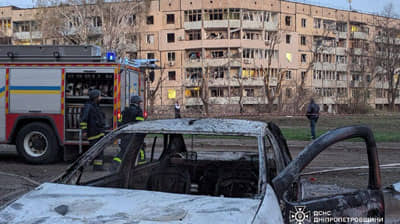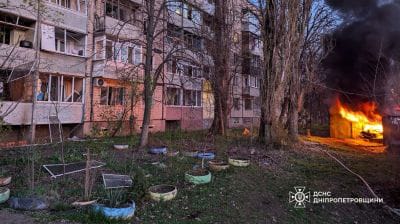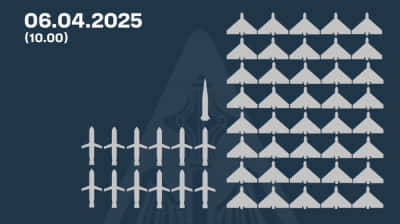Russia anticipated Ukrainian operation in Kursk for months and prepared for it – The Guardian

Russian military command had predicted that Ukraine might launch an operation in Russia's Kursk Oblast and spent several months planning how to prevent it, according to documents seized by the Ukrainian army from abandoned Russian positions in the region.
Source: The Guardian
Details: The newspaper reports that at the end of August, its journalists met with Ukrainian special forces who had seized Russian documents. These documents, taken from buildings in Kursk Oblast, included materials from Russia’s Internal Affairs Ministry, the Federal Security Service (FSB) and the army. Journalists were able to review and photograph them.
The Guardian notes that it was unable to independently verify the authenticity of the documents but emphasises that "they bear the hallmarks of genuine Russian army communications".
The documents contain warnings from several months prior about a potential Ukrainian offensive and reveal concerns about the morale of Russian troops.
Some of the documents are printed orders distributed to various units, while others are handwritten logs documenting events and issues at specific positions. The earliest entries date back to late 2023, while the most recent are from just six weeks before Ukraine launched its offensive in Kursk Oblast on 6 August.
Most of the documents come from units of Russia’s 488th Guards Motorised Rifle Regiment, specifically from the second company of its 17th battalion.
Quote: "Ukraine’s incursion into Kursk took Kyiv’s western partners and many in the Ukrainian elite by surprise, as planning had been restricted to a very small number of people. But Russian military documents contain months of warnings about a possible incursion into the area and an attempt to occupy Sudzha, a town of 5,000 residents that has now been under Ukrainian occupation for more than a month."
For instance, warnings about a "potential for a breakthrough at the state border" by Ukrainian armed formations were already present in a message from 4 January. At that time, Russian troops were ordered to intensify training to prepare for repelling any attack.
On 19 February, Russian unit commanders were warned of Ukrainian plans for "a rapid push from the Sumy region into Russian territory, up to a depth of 80 km [50 miles], to establish a four-day ‘corridor’ ahead of the arrival of the main Ukrainian army units on armoured vehicles."
In mid-March, Russian border units were instructed to strengthen defensive lines and "organise additional exercises" in preparation for a cross-border attack from Ukraine.
Quote: "In mid-June, there was a more specific warning of Ukrainian plans ‘in the direction Yunakivka-Sudzha, with the goal of taking Sudzha under control’, which did indeed happen in August. There was also a prediction that Ukraine would attempt to destroy a bridge over the Seym River to disrupt Russian supply lines in the region, which also later happened. The June document complained that Russian units stationed at the front ‘are filled only 60-70% on average, and primarily made up of reserves with weak training’".
The Guardian recalls that when Ukraine launched its offensive on 6 August, many Russian soldiers abandoned their positions, and within a week Ukraine had taken full control of Sudzha. During the chaotic Russian retreat, Ukrainian forces captured hundreds of soldiers, many of whom were conscripts.
The newspaper adds that the documents provide insights into Russian tactics over the past year. One order, for example, mentioned the need to create trenches and positions with models of tanks and dummy soldiers to confuse Ukrainian reconnaissance drones. Soldiers were instructed to light fires at night, walk with torches, and move the dummies from time to time. There were also orders to create radio communications about these positions, with the aim of having them intercepted.
It is unclear whether such positions were ever created. Ukrainian reconnaissance drone operators working in the area told The Guardian that they had seen no evidence of these positions.
In March, Russian documents reported an increase in incidents where Ukrainian sabotage groups disguised themselves in Russian uniforms to operate behind Russian lines. To prevent this, Russian commanders were instructed to implement specific identification signs, referred to as "variant n6", to be attached with transparent tape.
Additionally, the documents indicate significant morale issues among Russian troops, including references to soldier suicides.
Russian commanders were also instructed to ensure that soldiers watched Russian state media daily to maintain their "psychological condition".
Background:
- Earlier, The Wall Street Journal reported that Russian Colonel General Alexander Lapin, who oversaw security in Russia’s Kursk Oblast, had dissolved the authority that was responsible for protecting the vulnerable border region months before Ukraine's operation.
- It was also reported that Ukraine was encircling Russian troops in Kursk Oblast and preparing for prolonged fighting.
- The operation in Kursk Oblast began on 6 August.
- As of 20 August, the Ukrainian military had taken control of more than 1,260 sq. km of territory and 93 settlements in Kursk Oblast.
- On 13 September, Ukrainian President Volodymyr Zelenskyy said that the Russians had launched their "rapid offensive" in Kursk Oblast, but had not achieved any serious results.
- On 18 September, Oleksii Dmytrashkivskyi, a representative of the military commandant's office in Kursk Oblast, said that Russia's counteroffensive to recapture the territory controlled by Ukrainian troops in Kursk Oblast had been "stopped".
Support UP or become our patron!





